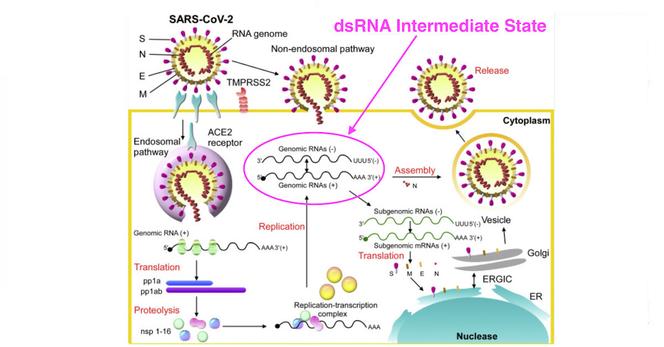1/13
How RNA viruses can use their dsRNA intermediate state as a de facto latent state, facilitating viral persistence.
Positive single-stranded #RNA viruses have a replication cycle that includes a double-stranded RNA (dsRNA) intermediate state.
#virology @virology #virus #virome #ViralPersistence #InfectiousDisease
